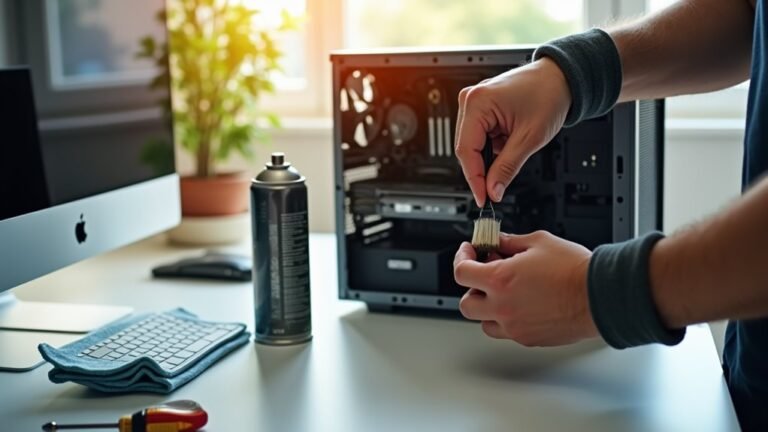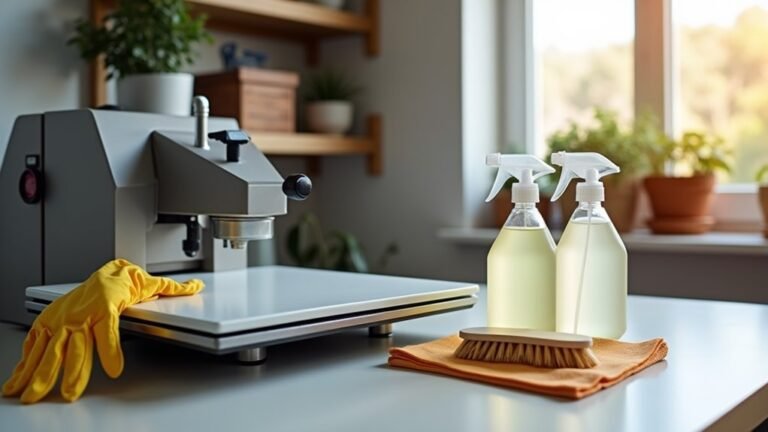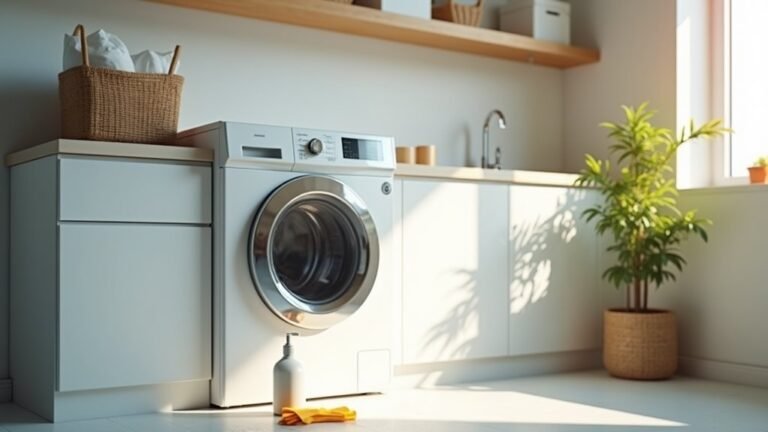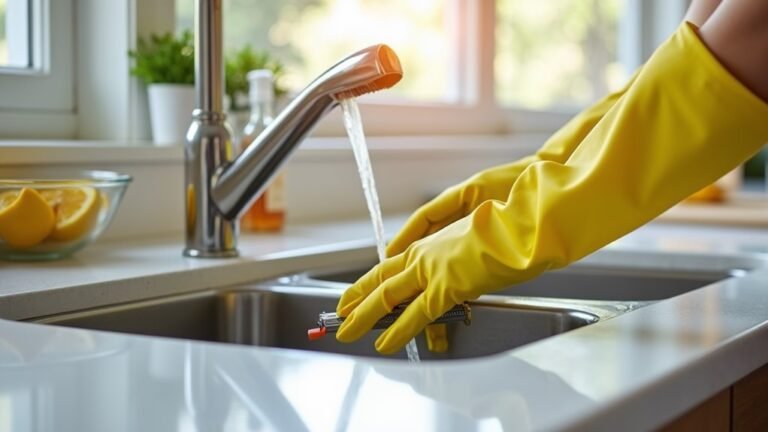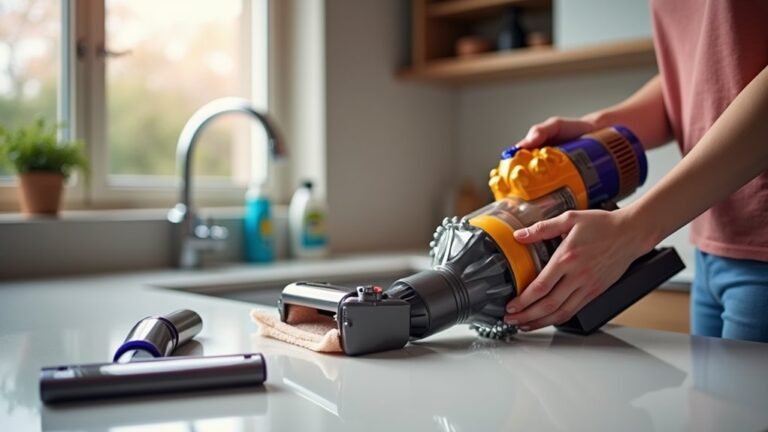TV remotes are like magnets for dirt and germs. We use them while eating snacks, right after checking our phones, or cuddling with our pets. All this touching makes remotes one of the dirtiest things in our homes that rarely gets cleaned.
According to Dr. Charles Gerba, a microbiologist at the University of Arizona, "Remote controls in hotel rooms have more bacteria on them than toilet seats." This is likely true for home remotes too, since they're handled by everyone in the family but rarely cleaned.
Think about it: when was the last time you cleaned your remote? If you can't remember, you're not alone. Every button press leaves behind oils from our fingers, and crumbs from our snacks often get stuck between the buttons. Plus, these devices get passed around from person to person, making them perfect spots for germs to collect.
When you think about how often we touch remotes while eating chips, popcorn, or other snacks during TV time, it's easy to see why they need regular cleaning. We might wash our hands often, but that remote control sitting on the coffee table needs some attention too.
Germ Collectors Need Cleaning
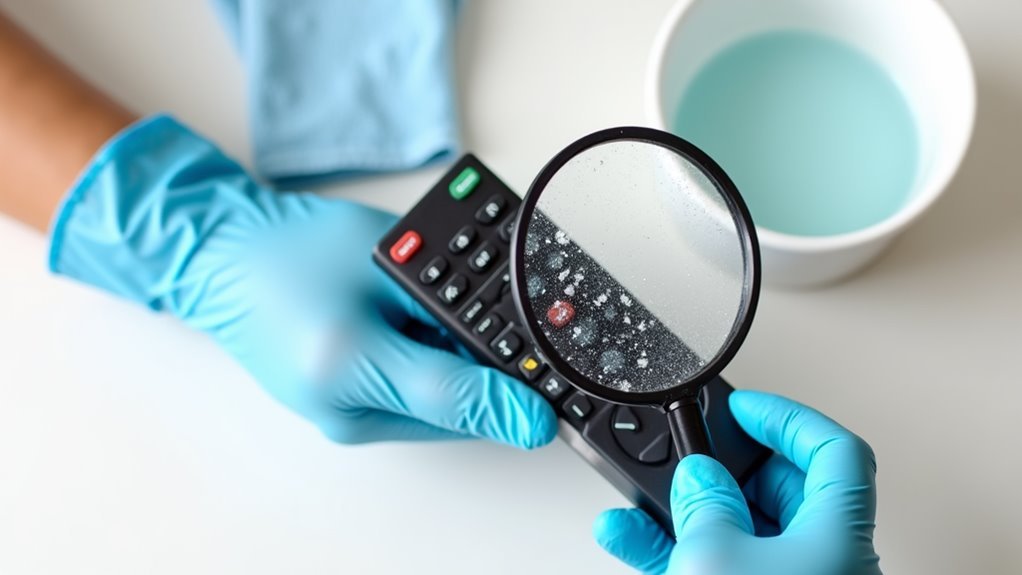
Couch potatoes, you might want to think twice before reaching for that remote control.
Before reaching for your TV remote, consider this: your favorite couch companion may be harboring an unseen danger.
We've discovered that remote controls harbor bacteria at levels 15 times higher than toilet seats, and about 25% of us never clean them.
Since we're constantly handling these devices, they've become significant germ collectors.
That's why we need to maintain proper hygiene with regular cleaning, especially during illness.
Let's explore the essential do's and don'ts of cleaning your TV remote control, which go beyond just wiping down the surface.
While regular cleaning with antibacterial solutions and careful attention to button crevices will help maintain your remote's hygiene, we'll also need to understand what practices could damage your device.
We'll walk through the proper steps for both basic and deep cleaning, ensuring you can keep your remote germ-free without compromising its functionality.
Things to Do When Cleaning a TV Remote Control
Cleaning a TV remote control is essential for both hygiene and functionality, as these devices can harbor significant amounts of bacteria while being used daily by multiple people.
Regular maintenance not only guarantees a sanitary entertainment experience but also helps prevent button malfunctions and extends the remote's lifespan, making it a worthwhile household task that shouldn't be overlooked.
- Remove batteries – Extract all batteries and set them aside to prevent electrical issues and potential damage to the remote's circuitry.
- Prepare cleaning solution – Mix equal parts water and vinegar or use rubbing alcohol on a lint-free cloth until damp but not soaking wet.
- Initial wipe down – Clean the exterior surface thoroughly with the dampened cloth, paying special attention to frequently touched areas.
- Detail cleaning – Use a toothpick or compressed air to remove debris from button edges and crevices.
- Sanitize – Apply rubbing alcohol or vinegar solution to disinfect all surfaces.
- Deep clean if needed – Open remote case for thorough internal cleaning if buttons are sticking.
- Dry and reassemble – Confirm all components are completely dry before reinserting batteries and resuming use.
- Regular maintenance – Schedule monthly cleanings to maintain peak hygiene and performance.
Things to Avoid When Cleaning a TV Remote Control
Properly cleaning a TV remote control requires careful attention to avoid damaging this sensitive electronic device. While regular cleaning is important for hygiene and functionality, using incorrect methods or materials can permanently damage the remote or render it completely useless.
- Excessive moisture – Using too much water or cleaning solution can seep into internal components and cause short circuits.
- Direct spray application – Spraying cleaners directly onto the remote increases risk of liquid penetration through seams.
- Harsh solvents – Products like WD-40 or alcohol-based cleaners break down plastic and rubber components.
- Aggressive scrubbing – Forceful rubbing can wear away essential button contact surfaces and coatings.
- Complete submersion – Soaking the remote introduces minerals and moisture that damage electronic circuits.
- Hard brushes or abrasives – Scratchy materials can damage the surface and remove necessary button markings.
- Compressed air – High-pressure air can force debris deeper into the remote or dislodge internal components.
Steps
Cleaning your TV remote control regularly is essential not just for hygiene but also for maintaining peak functionality.
Remote controls are among the most frequently touched household items yet often overlooked during routine cleaning, making them potential breeding grounds for bacteria and germs.
A thorough cleaning process helps eliminate accumulated dirt, oils from hands, and harmful microorganisms while ensuring the remote continues to work properly.
Step 1: Remove batteries and shake remote upside down to remove loose debris
Step 2: Dampen a microfiber cloth with antibacterial solution
Step 3: Wipe down all exterior surfaces of the remote, avoiding excess moisture
Step 4: Dip a cotton swab in rubbing alcohol for cleaning between buttons and crevices
Step 5: Use a toothpick to remove stubborn dirt from tight spaces
Step 6: Allow remote to air dry completely
Step 7: Reinsert batteries and test functionality
Step 8: Repeat cleaning process monthly for best maintenance
Final Thoughts
A well-maintained TV remote isn't just about cleanliness – it's about ensuring reliable performance and protecting your family's health.
Once you've cleaned your remote, make it a habit to clean the back and buttons monthly.
While using alcohol-based cleaners is a good idea, remember to be gentle and thorough.
Regular maintenance will keep your remote germ-free and functioning properly.

A clean remote control isn't just about aesthetics – it's an important part of maintaining a healthy home environment.
Maintaining a clean remote control goes beyond looks – it's a crucial step in creating a healthier living space for everyone.
While it's easy to overlook this frequently touched device, regular cleaning can prevent the spread of bacteria and keep your remote functioning properly.
Remember these key takeaways:
- Clean your remote at least monthly
- Use appropriate cleaning solutions and avoid excess moisture
- Remove batteries before cleaning
- Allow the remote to dry completely before reassembling
- Deep clean only when necessary for malfunctioning buttons
Taking just 10 minutes each month to sanitize your remote can protect your family's health and extend the life of your device.
Start your cleaning routine today – your hands and your TV remote will thank you.


